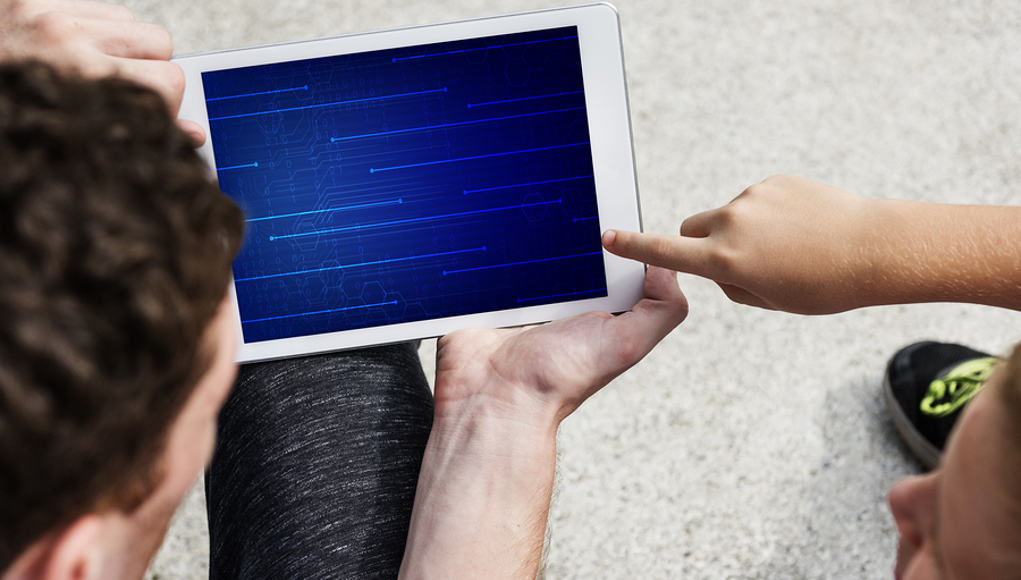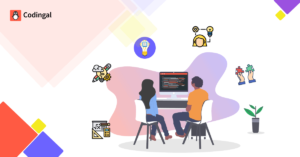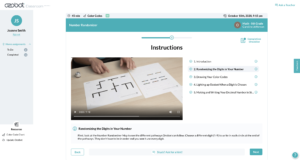Smart Review | Coding in a Snap

By Sean Russell
By now you’re probably well aware of the advantages of including computer science (CS) skills in instruction. With CS, students develop valuable logical thinking and problem-solving skills.
Though this can seem like a challenging prospect, as a fifth-grade math and science teacher, I’ve witnessed the power of CS integration firsthand. A few years ago, the Hour of Code weeklong lessons introduced my students to coding and program design. Using resources from sites like Code.org, Tynker.com, Scratch and Google CS First allowed my students to create and learn like never before.
However, for me there were two big problems: It was difficult to apply these skills to the curriculum in authentic ways, and the coding was very sedentary.
When I learned about the free app CodeSnaps from Curriculum Pathways I decided to try it for my students. It consists of coding blocks printed out on cardstock paper and “snapped” together to form a program, which is then scanned with an iPad® using the CodeSnaps app. The app sends that program to a Sphero – a baseball-size, super-tough robotic ball – which then carries out the program’s directions.

My students could use their coding skills to manipulate an object in the real world, as well as drag and drop code tiles directly on the iPad. The “programmers” were moving more than their fingers now, exercising communication skills and collaboration was happening in a natural way.
By early fall of 2016, my classroom was consistently buzzing with these activities. With a single iPad, one Sphero and some imagination, math and science lessons became engaging and fun. The students programmed Sphero to plot points on a giant coordinate grid made from a shower curtain, and to roll through a floor-sized digestive system to illustrate the path food takes in our bodies.
They engineered ways to give Sphero more traction in order to navigate different landforms on the school playground. We engineered a portable “playing field” for Sphero from pool noodles and rope, and the students created obstacle courses and bowling lanes.
 All of these activities and projects necessitated measuring and converting units of measure, force and motion. They also required cooperation. Other teachers in my school wanted in on the action, so we needed ways to infuse language arts and social studies with CodeSnaps goodness.
All of these activities and projects necessitated measuring and converting units of measure, force and motion. They also required cooperation. Other teachers in my school wanted in on the action, so we needed ways to infuse language arts and social studies with CodeSnaps goodness.
After brainstorming with some English language arts teachers at my school, it became apparent that the logical steps involved programming Sphero with CodeSnaps look a lot like a flowchart-style graphic organizer often used to help students plan a piece of writing. Simply loaning out my CodeSnaps “kit” and letting a few other classes play with it did wonders for the writing process when my fellow teachers helped their students see the connections between programming and crafting a story.
A social studies teacher and I worked together to give her students another way to show off their knowledge about early trade routes. With the help of a huge, unused map of the world, the students programmed Sphero to roll along a specific trade route on the map laid on the floor. The students instructed Sphero to pause at certain points so they could deliver important bits of information. The social studies teacher liked it so much that she adopted it as an assessment method for that unit.
While no one app does it all, I really like CodeSnaps for its wide range of potential applications when I feel like getting creative. It’s a very flexible delivery platform for instruction of any kind. The cost outlay is low, and the payoff is high. In my classes, test scores rose, growth increased and engagement was consistent–and while it’s hard to attribute this to just one tool, I do believe Sphero and CodeSnaps were valuable additions to my curriculum and class culture.
Almost every observer we had in the classroom this past school year commented that the learning looked a lot like playful discovery. It absolutely was and we were having a ball!
Sean Russell is the Environmental Connections Content Integration Specialist at Millbrook Environmental Connections Magnet Elementary School in Raleigh, NC. Follow Sean on Twitter: @seanrussell311
For more, see:
- Smart Review | Cubetto: Teaching Coding Without a Screen
- Skip Coding, Teach Data Science
- Smart List: 40 Coding & Computer Science, Assessment & Data Resources
Stay in-the-know with all things EdTech and innovations in learning by signing up to receive the weekly Smart Update.






Sara Lins
Work very well done. Including technology skills can only bring learning advantages.